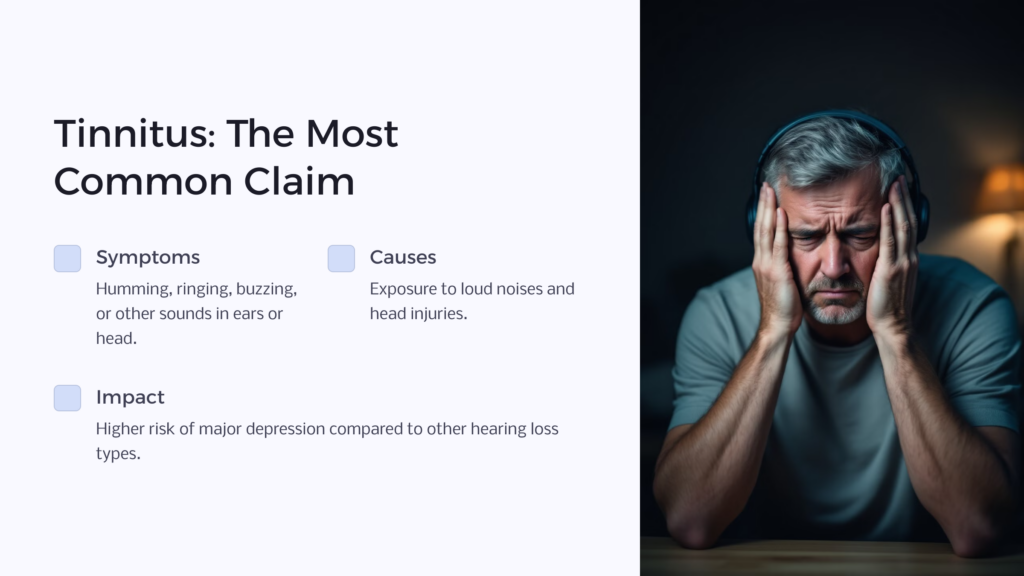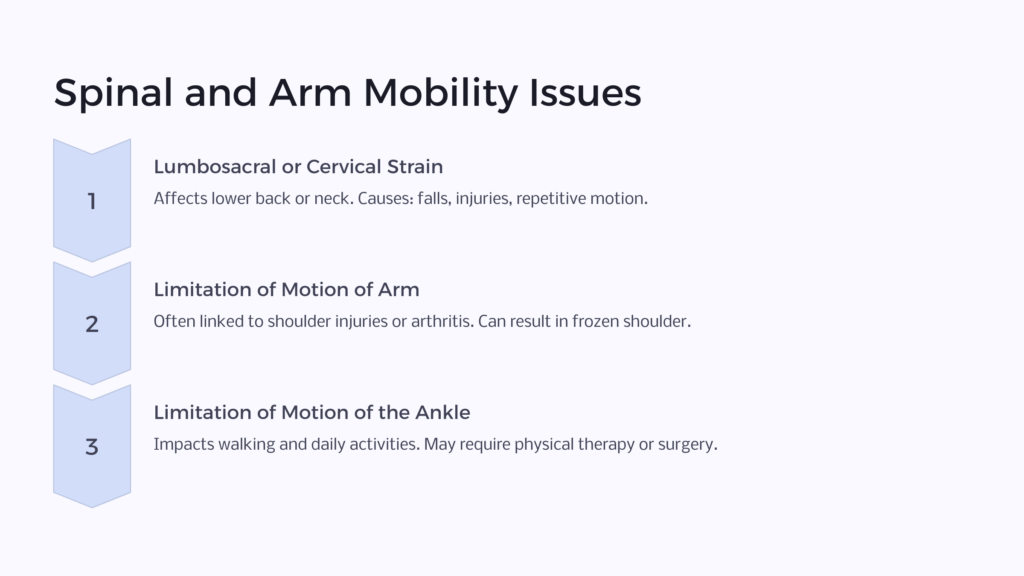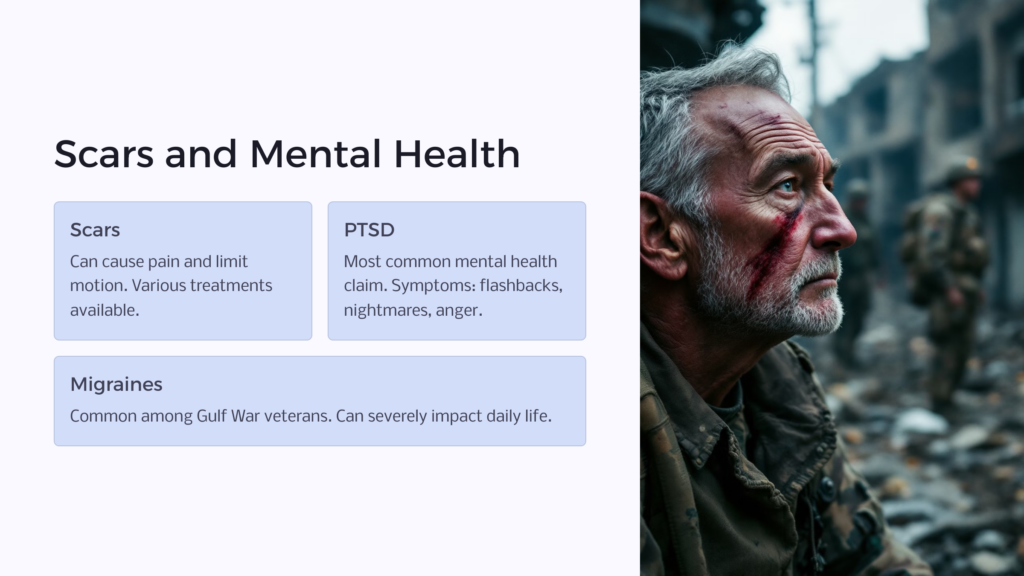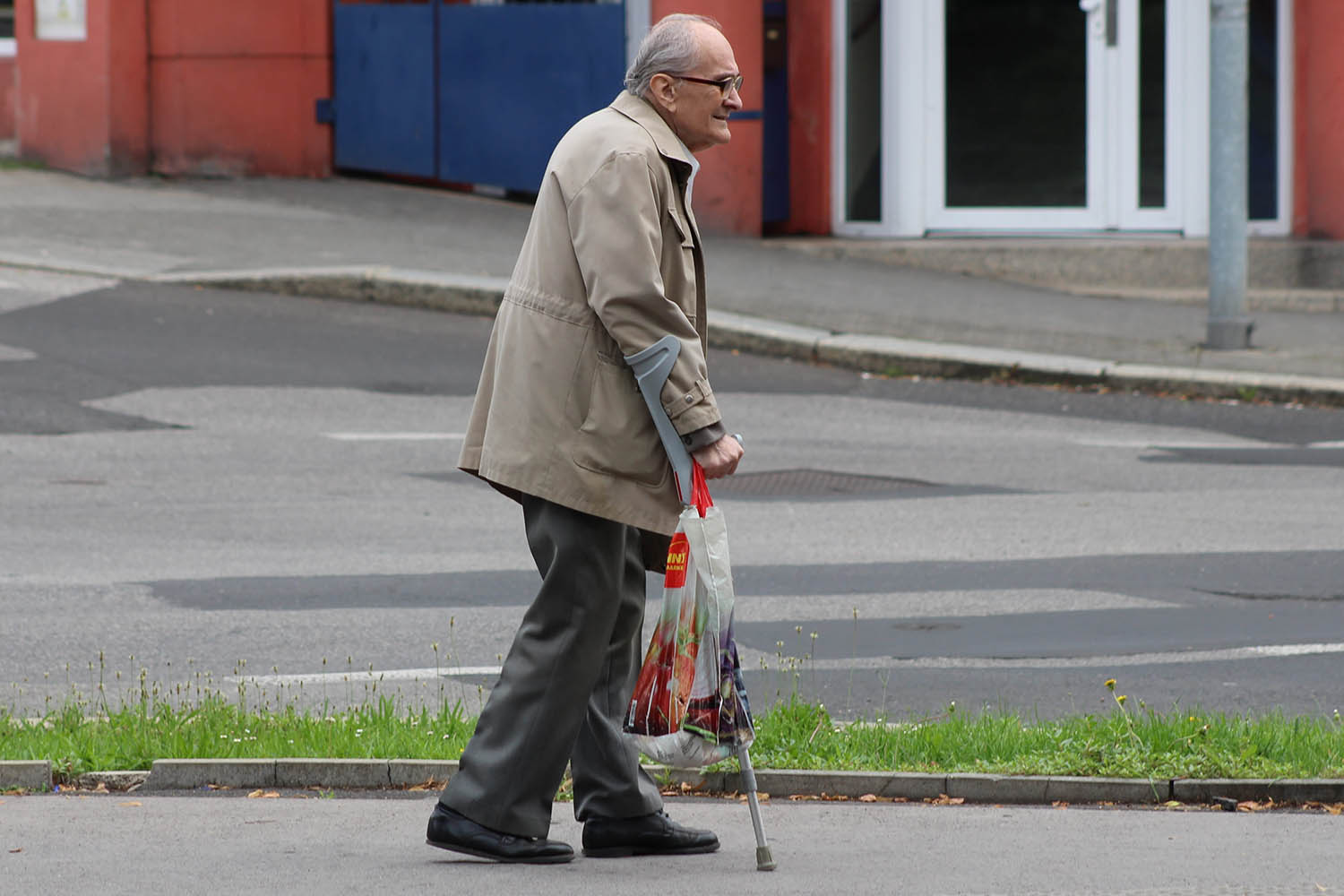Each year, millions of veterans receive VA compensation for various types of service-connected disabilities. In 2018, the VA released a comprehensive report detailing the most common types of VA disability claims.
Top 10 Most Common VA Disability Claims
- Tinnitus
- Limitation of flexion, knee
- Hearing loss
- Lumbosacral or cervical strain
- Limitation of motion of the arm
- Scars, general
- Limitation of motion of the ankle
- Post-traumatic stress disorder
- Migraine
- Paralysis of the sciatic nerve
Below is a list of the most frequent disabilities claimed by disabled veterans that resulted in VA compensation being paid. This list of disabilities is reflective of the most common conditions suffered by veterans of all ages; however, younger disabled veterans frequently suffer from some additional conditions not listed including degenerative arthritis of the spine and sleep apnea. Paralysis of the sciatic nerve is more frequently claimed by disabled veterans from the Vietnam War era.
Tinnitus

One of the most common conditions disabled veterans claim and are awarded VA disability compensation for is tinnitus. According to the VA, tinnitus symptoms include “humming, ringing, buzzing, or other sounds in the ears or head.” Exposure to loud noises and head injuries can cause tinnitus. Tinnitus sufferers are at a much higher risk of having major depression than those with other types of hearing loss.
Limitations of Flexion, Knee
Disability compensation is often paid to veterans with knee pain and injuries. Veterans awarded VA compensation for knee conditions may be unable to fully flex their knees, inhibiting their ability to bend and flex and do everyday tasks. This problem can be exacerbated by age and stem from a physical injury sustained to the knee area including bones and muscles. Physical therapy can help but some sufferers have chronic stiffness and pain that requires surgery.
Hearing Loss
Hearing loss is different from tinnitus in that there is not always hearing loss with tinnitus, and unlike tinnitus hearing loss does not result in the amplification of background noise. Hearing loss occurs for many with age but in younger people there can be a genetic predisposition for hearing loss, a disease or chronic condition that has caused hearing loss, or it can be due to prolonged exposure to loud noise. There have been many advancements in hearing aids and surgeries.
Lumbosacral or Cervical Strain

This disability results from strain or injury to the vertebrae which make up the spine. Lumbar vertebrae are in the lower back while cervical vertebrae are just below or at the back of the neck. Lumbosacral strain or cervical strain can occur from falls or other injuries, or repetitive motion or positions. Pain can range from mild to moderate, to rendering someone completely disabled and unable to engage in normal daily activity.
Limitation of Motion of Arm
Limited motion in the arm can be traced back to an injury to the shoulder joints and muscles or to a chronic condition such as arthritis. Fluid in the shoulder joint may decrease causing inflammation and scar tissue. This condition is often referred to as frozen shoulder. Due to this condition, you may not be able to raise your arm above your head and moving your arm could be very painful.
Scars

Serious scarring of the skin resulting from burns or chemical exposure can result in serious disability. Scars can be quite painful and limit range of motion or render a veteran completely disabled. Physical therapy or surgery may be needed to address disability caused by scars. There are now many different treatments for serious scarring.
Limitation of Motion of the Ankle
An injury to the ankle can result in difficulty walking, running, or performing everyday activities. Injuries to the ankle include fractures, breaks, and tears. Physical therapy can help but some ankle injuries require surgery.
Post-Traumatic Stress Disorder
PTSD is the most frequently claimed disability among mental health disorders veterans use medical evidence to establish and receive disability compensation. PTSD may co-occur with other mental health conditions such as depression, obsessive compulsive disorder, or anxiety and cause symptoms such as flashbacks, nightmares, sudden flashes of anger, or fear of leaving one’s home or going to certain locations (e.g. agoraphobia). A psychiatrist or behavioral health professional must diagnose PTSD.
Migraines
Debilitating, painful headaches known as migraines are a common disability claimed by Gulf War Era veterans. Migraines can result from a variety of injuries such as falls, inhalation of or exposure to chemicals, or from traumatic brain injuries resulting from explosions or car accidents. Migraine sufferers can experience severe symptoms that hinder their daily life activities from sensitivity to light, to pounding in the head and dizziness.
Paralysis of the Sciatic Nerve
The sciatic nerve is the longest and widest nerve in the human body. Sciatica or paralysis of the nerve can cause numbness in the back of the leg. This potentially serious condition can be the result of nerve damage, damage to the spine, or a compressed nerve. Pain can begin in the lower back then radiate down through the body causing great discomfort. Treatment includes physical therapy or spine surgery for very serious cases of nerve compression.
Am I eligible for VA disability benefits?
 Your disability must stem from an injury or illness experienced during active service. An injury or illness may have occurred during deployment, wartime, active duty training, or inactive duty training. What some veterans do not realize is they may also make a VA claim based on a preexisting condition that worsened during active service. To be eligible for benefits, your disability must render you unable to work full-time or even part-time.
Your disability must stem from an injury or illness experienced during active service. An injury or illness may have occurred during deployment, wartime, active duty training, or inactive duty training. What some veterans do not realize is they may also make a VA claim based on a preexisting condition that worsened during active service. To be eligible for benefits, your disability must render you unable to work full-time or even part-time.

Veterans who were in active service in a uniformed branch of the U.S. military or who were called up for full-time active service in the National Guard or Reserve Corps are eligible for VA disability compensation. According to the Department of Veteran’s Affairs, “VA disability benefits may also be given to those who served full time in the Public Health Service’s Commissioned Officer Corps or in the National Oceanic and Atmospheric Administration (NOAA; formerly the Coast and Geodetic Survey). In some cases, those who served full time, during wartime, in the Merchant Marine or the Flying Tigers may also be eligible.” Veterans with a dishonorable discharge are not eligible for benefits.
Where do I file a disability claim?
A veterans disability claim may be filed with the Department of Veteran’s Affairs using their online ebenefits portal, in person at a VA regional office (listed online here), or by mail. To mail in your claim you will need to download and complete all required documents and mail them to:
Department of Veterans Affairs
Claims Intake Center
PO Box 4444
Janesville, WI 53547-4444
Claiming a VA disability can be a lengthy, detailed, and sometimes frustrating process. It is highly recommended that you get assistance in filing your claim. A department staff member can help you in person at a VA regional office or you can call 844-698-2311 to be connected to someone who can help you. The department can also refer you to a reputable attorney, claims agent, or Veterans Service Organizations (VSO) Representative. Information about hiring a veterans disability attorney can be found here. It is especially important to hire an attorney when filing an appeal to a denial of your claim.
How do you prove a service-connected disability?
All disabilities must be proven using medical evidence. A physician must document your physical injuries and symptoms that render you partially or completely disabled as part of the disability claim process. In the case of a mental health disorder, a psychiatrist or behavioral health provider must document symptoms and evidence of disability stemming from the diagnosed mental health disorder. A private physician may document your disability. You will also need to present discharge or separation papers and other records with your claim.
How long will it take to receive a decision on a VA disability claim?
It will likely take the VA over three months to decide your claim. If you are denied benefits you should seriously consider contacting a VA disability claims attorney if you have not done so already. You deserve the best assistance in making your claim, and especially in appealing a denial. It took a lot of your time to file the claim, and for the VA to make a decision, so make your life easier and get assistance and support, at least for the appeal.
What is a VA Disability Rating?
Each veteran receives a VA disability rating once a disability is established. A VA disability rating ranges from 0% to 100%. Veterans with a 0% disability rating can still receive a monthly payment at the 10% rate if two or more disabilities are established that interfere with employability. In 2020, for example, if you have a 10% disability rating and no dependents, you will receive a monthly payment of $142.29. If your disability renders you 100% percent disabled and unable to work, you will be eligible to receive a monthly payment of $3,106.04. Your monthly payment may vary based on other factors such as other benefits received and the number of dependents.
The number of veterans given a VA disability rating of 100% increased by 5% between 2014 and 2018. Having a disability rating for two claims does not result in a VA disability rating that is the sum of the two ratings. The new total VA disability rating is based on the efficiency to perform work factor. A series of mathematical steps is taken to get to the final disability rating.
VA Disability Claims
There are more than 900 codes for various VA disabilities. The most common disabilities veterans suffer are musculoskeletal, auditory, and neurological disorders. Among VA disability benefits paid for debilitating mental health disorders, PTSD is most common. Filing a VA disability claim is not an easy task and can take some time to prepare. It is advised that you enlist the assistance of an advocate or attorney. The impact on your ability to work is how the final disability rating is calculated. If any of the above conditions or any other chronic conditions or diseases are interfering with your ability to work and provide for yourself and your family, consider filing a VA disability claim.
 Benefits.com Advisors
Benefits.com Advisors
With expertise spanning local, state, and federal benefit programs, our team is dedicated to guiding individuals towards the perfect program tailored to their unique circumstances.
Rise to the top with Peak Benefits!
Join our Peak Benefits Newsletter for the latest news, resources, and offers on all things government benefits.


















